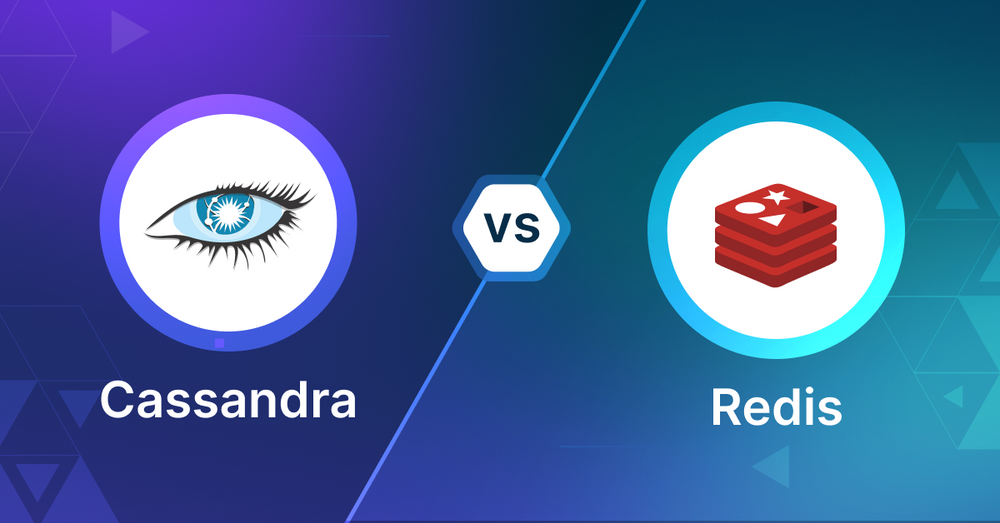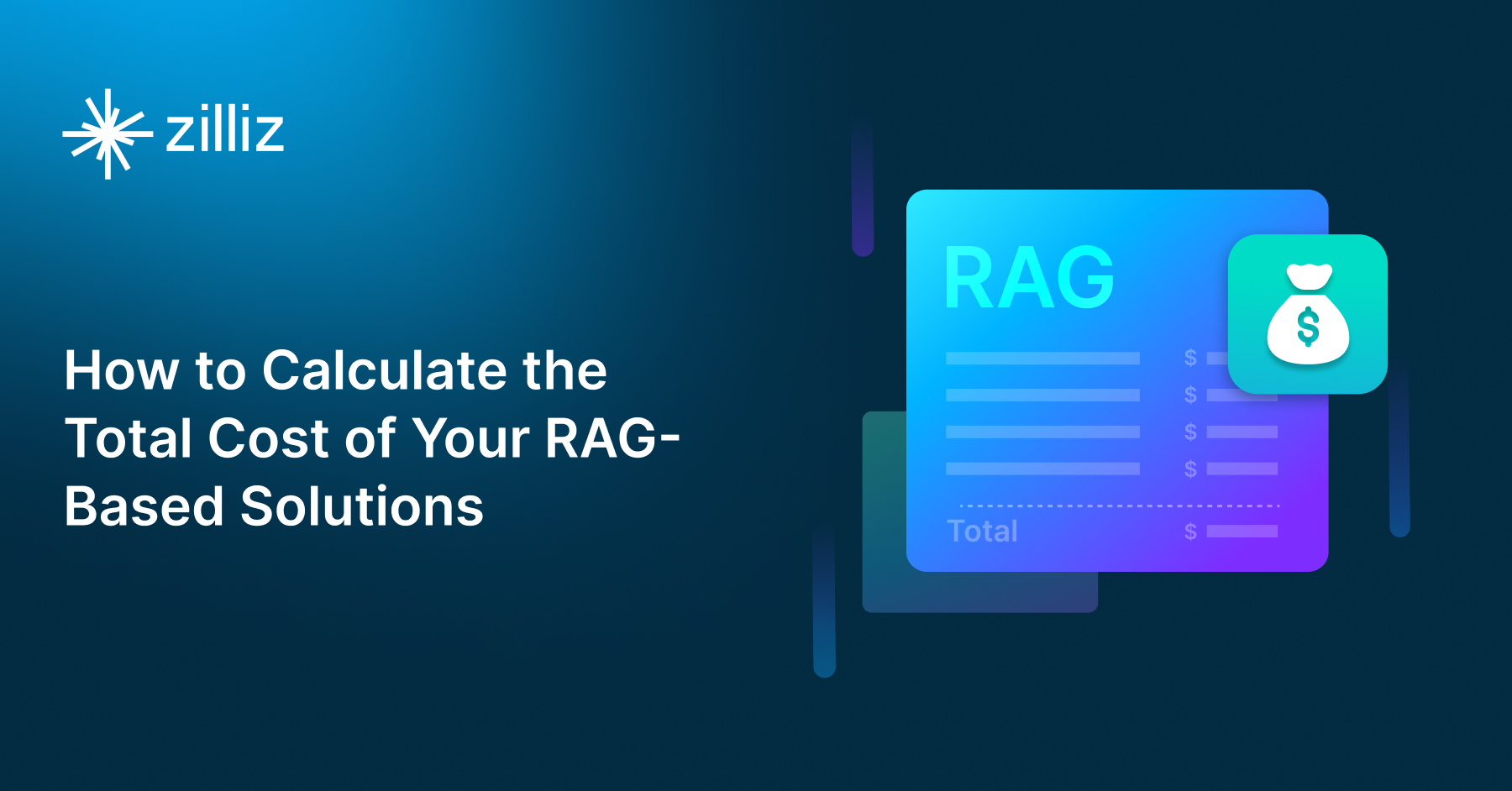Apache Cassandra vs. Redis: Choosing the Right Vector Database for Your AI Applications

As AI-driven applications become more prevalent, developers and engineers face the challenge of selecting the right database to handle vector data efficiently. Two popular options in this space are Apache Cassandra and Redis. This article compares these technologies to help you make an informed decision for your vector database needs.
What is a Vector Database?
Before we compare Apache Cassandra and Redis, let's first explore the concept of vector databases.
A vector database is specifically designed to store and query high-dimensional vector embeddings, which are numerical representations of unstructured data. These vectors encode complex information, such as text's semantic meaning, images' visual features, or product attributes. By enabling efficient similarity searches, vector databases play a pivotal role in AI applications, allowing for more advanced data analysis and retrieval.
Vector databases are adopted in many use cases, including e-commerce product recommendations, content discovery platforms, anomaly detection in cybersecurity, medical image analysis, and natural language processing (NLP) tasks. They also play a crucial role in Retrieval Augmented Generation (RAG), a technique that enhances the performance of large language models (LLMs) by providing external knowledge to reduce issues like AI hallucinations.
There are many types of vector databases available in the market, including:
- Purpose-built vector databases such as Milvus, Zilliz Cloud (fully managed Milvus)
- Vector search libraries such as Faiss and Annoy.
- Lightweight vector databases such as Chroma and Milvus Lite.
- Traditional databases with vector search add-ons capable of performing small-scale vector searches.
Apache Cassandra is a traditional NoSQL database that has evolved to include vector search capabilities as an add-on. Redis is an in-memory database that has also evolved to include vector search capabilities.
Apache Cassandra: Overview and Core Technology
Apache Cassandra is an open-source, distributed NoSQL database known for its scalability and availability. Cassandra's features include a masterless architecture for availability, scalability, tunable consistency, and a flexible data model. With the release of Cassandra 5.0, it now supports vector embeddings and vector similarity search through its Storage-Attached Indexes (SAI) feature. While this integration allows Cassandra to handle vector data, it's important to note that vector search is implemented as an extension of Cassandra's existing architecture rather than a native feature.
Cassandra's vector search functionality is built on its existing architecture. It allows users to store vector embeddings alongside other data and perform similarity searches. This integration enables Cassandra to support AI-driven applications while maintaining its strengths in handling large-scale, distributed data.
A key component of Cassandra's vector search is the use of Storage-Attached Indexes (SAI). SAI is a highly scalable and globally distributed index that adds column-level indexes to any vector data type column. It provides high I/O throughput for databases to use Vector Search and other search indexing. SAI offers extensive indexing functionality, capable of indexing both queries and content (including large inputs like documents, words, and images) to capture semantics.
Vector Search is the first instance of validating SAI's extensibility, leveraging its new modularity. This Vector Search and SAI combination enhances Cassandra's capabilities in handling AI and machine learning workloads, making it a strong contender in the vector database space.
Redis: Overview and Core Technology
Redis, originally known for its high-performance in-memory data storage, has expanded its capabilities to include vector search functionality through the Redis Vector Library, now integrated into Redis Stack. This addition allows Redis to perform efficient vector similarity searches while maintaining its trademark speed and performance.
Redis's vector search capabilities are built on top of its existing infrastructure, leveraging the platform's in-memory processing for fast query execution. Redis uses the FLAT and HNSW (Hierarchical Navigable Small World) algorithms for approximate nearest neighbor search, which enables quick and accurate similarity searches even in high-dimensional vector spaces.
One of the key strengths of Redis's vector search is its ability to combine vector similarity queries with traditional filtering based on other attributes. This hybrid search capability allows developers to create complex queries that consider both semantic similarity and specific metadata criteria, making it versatile for a wide range of AI-driven applications.
The Redis Vector Library provides a user-friendly interface for developers to work with vector data in Redis. It offers flexible schema design, customizable vector queries, and extensions for LLM-related tasks such as semantic caching and session management. These tools make it easier for AI/ML engineers and data scientists to integrate Redis into their AI workflows, particularly for real-time data processing and retrieval applications.
Key Differences
Search Methodology
Both Cassandra and Redis utilize the HNSW (Hierarchical Navigable Small World) algorithm for approximate nearest neighbor search in vector spaces. Cassandra implements this through Storage-Attached Indexes (SAI), integrating vector search into its existing distributed architecture. Redis optimizes HNSW for in-memory processing, enabling fast similarity searches. Redis also offers the FLAT index as an alternative to HNSW for smaller datasets or when 100% recall is required.
Data Handling
Cassandra excels at managing large-scale structured and semi-structured data, storing vector embeddings alongside other data types. Redis, an in-memory data store, efficiently handles various data structures, particularly vector data, for real-time applications.
Scalability and Performance:
Cassandra is designed for horizontal scalability across distributed systems and is suitable for very large datasets. Redis offers exceptional performance for in-memory datasets, with scaling options through sharding.
Flexibility and Customization
Cassandra allows vector search customization within its existing query language. Redis provides a specialized vector library with customizable queries and LLM-related task extensions, offering greater flexibility for AI-specific use cases.
Integration and Ecosystem
Cassandra integrates well with big data ecosystems and analytics tools. Redis has a large ecosystem of client libraries and seamlessly integrates with AI and machine learning frameworks.
Ease of Use
Cassandra has a steeper learning curve due to its distributed nature. Redis is generally considered easier to set up and use, with a more intuitive interface for vector operations.
Cost Considerations
Cassandra may have higher operational costs for large-scale deployments. Redis can be more cost-effective for smaller, in-memory deployments, but costs can increase with scale.
Security Features
Cassandra offers robust security features for distributed environments. Redis provides encryption and access control, though some advanced features may require additional configuration.
When to Choose Redis or Apache Cassandra
Apache Cassandra is the preferred choice when dealing with large-scale distributed data that requires vector search capabilities. It excels in scenarios involving massive datasets that exceed the memory capacity of a single server or small cluster. Cassandra is particularly suitable for applications requiring high write throughput alongside vector search functionality and for use cases demanding strong consistency and fault tolerance across multiple data centers. It's ideal for projects that store and query vector data alongside large amounts of structured or semi-structured data. Cassandra shines when horizontal scalability is crucial for handling growing data volumes and query loads. Its flexibility in storing various data types, including vectors, in a distributed environment makes it a strong contender for complex, data-intensive applications.
Redis is the optimal choice in scenarios prioritizing speed and real-time processing, especially when working with datasets that can fit mostly or entirely in memory. It's particularly well-suited for building real-time applications requiring extremely low-latency vector searches. Redis excels when combining vector search with features like caching or pub/sub messaging, making it versatile for multi-faceted applications. It's an excellent choice for developing AI applications requiring flexible data structures and specialized LLM-related functionalities. Redis is also preferable when rapidly developing and deploying AI-driven features are prioritized. Its ability to implement full-text search capabilities alongside vector search adds to its appeal. Redis's simplicity and ease of use make it particularly attractive for projects with smaller to medium-sized datasets or those requiring quick setup and iteration.
The choice between Cassandra and Redis often depends on specific project requirements, existing infrastructure, and team expertise. While Cassandra offers robust solutions for large-scale, distributed vector search applications, Redis provides unparalleled speed and simplicity for in-memory, real-time vector operations. When making this decision, consider the scale of your data, the importance of real-time processing, the need for distributed architecture, and the specific features required by your application.
Conclusion
Apache Cassandra and Redis offer powerful vector search capabilities but cater to different use cases and requirements. Cassandra handles large-scale distributed data, providing robust scalability, strong consistency, and fault tolerance across multiple data centers. It's ideal for applications dealing with massive datasets that require vector search alongside structured and semi-structured data. Conversely, Redis shines in scenarios demanding high-speed, real-time vector operations, particularly for datasets that can fit in memory. Its strength lies in its simplicity, low latency, and seamless integration of vector search with other features like caching and pub/sub messaging. The choice between these technologies ultimately depends on your specific use case, data volume, performance requirements, and existing infrastructure. Consider factors such as dataset size, the need for real-time processing, scalability requirements, and the complexity of your data model when making your decision. Both Cassandra and Redis continue to evolve their vector search capabilities, making them valuable tools in the growing field of AI-driven data management and analytics.
While this article provides an overview of Cassandra and Redis, it's crucial to evaluate these databases based on your specific use case. One tool that can assist in this process is VectorDBBench, an open-source benchmarking tool designed for comparing vector database performance. Ultimately, thorough benchmarking with specific datasets and query patterns will be essential in making an informed decision between these two powerful yet distinct approaches to vector search in distributed database systems.
Using Open-source VectorDBBench to Evaluate and Compare Vector Databases on Your Own
VectorDBBench is an open-source benchmarking tool designed for users who require high-performance data storage and retrieval systems, particularly vector databases. This tool allows users to test and compare the performance of different vector database systems such as Milvus and Zilliz Cloud (the managed Milvus) using their own datasets and determine the most suitable one for their use cases. Using VectorDBBench, users can make informed decisions based on the actual vector database performance rather than relying on marketing claims or anecdotal evidence.
VectorDBBench is written in Python and licensed under the MIT open-source license, meaning anyone can freely use, modify, and distribute it. The tool is actively maintained by a community of developers committed to improving its features and performance.
Download VectorDBBench from its GitHub repository to reproduce our benchmark results or obtain performance results on your own datasets.
Take a quick look at the performance of mainstream vector databases on the VectorDBBench Leaderboard.
Read the following blogs to learn more about vector database evaluation.
Further Resources about VectorDB, GenAI, and ML
- What is a Vector Database?
- Apache Cassandra: Overview and Core Technology
- Redis: Overview and Core Technology
- Key Differences
- Conclusion
- Using Open-source VectorDBBench to Evaluate and Compare Vector Databases on Your Own
- Further Resources about VectorDB, GenAI, and ML
Content
Start Free, Scale Easily
Try the fully-managed vector database built for your GenAI applications.
Try Zilliz Cloud for FreeKeep Reading

How to Build an Enterprise-Ready RAG Pipeline on AWS with Bedrock, Zilliz Cloud, and LangChain
Build production-ready enterprise RAG with AWS Bedrock, Nova models, Zilliz Cloud, and LangChain. Complete tutorial with deployable code.

Data Deduplication at Trillion Scale: How to Solve the Biggest Bottleneck of LLM Training
Explore how MinHash LSH and Milvus handle data deduplication at the trillion-scale level, solving key bottlenecks in LLM training for improved AI model performance.

How to Calculate the Total Cost of Your RAG-Based Solutions
In this guide, we’ll break down the main components of RAG costs, show you how to calculate these expenses using the Zilliz RAG Cost Calculator, and explore strategies to manage spending efficiently.
The Definitive Guide to Choosing a Vector Database
Overwhelmed by all the options? Learn key features to look for & how to evaluate with your own data. Choose with confidence.